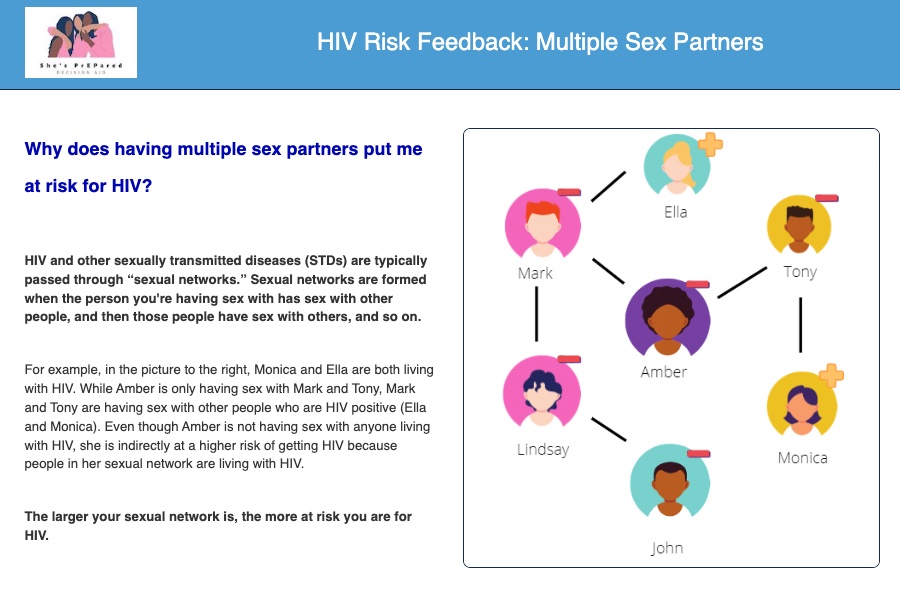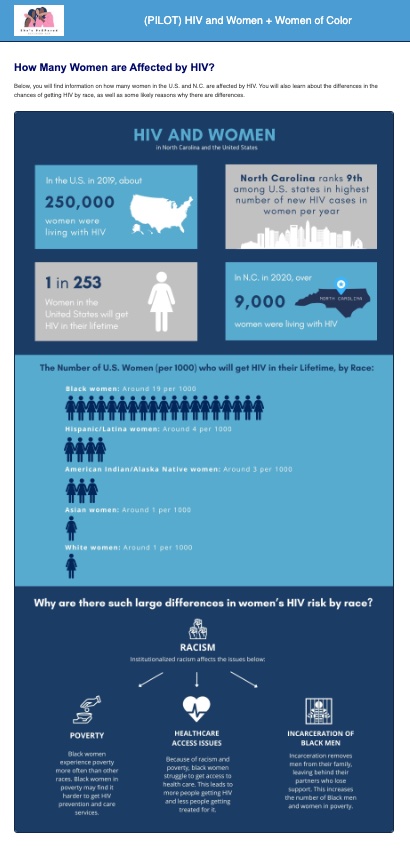
Wow, this summer has really flown by! It seems like just yesterday I was getting acquainted with my practicum and responsibilities, and now, two months later, I am already wrapping up and about to begin the second year of my MPH program. Reading over my initial blog post made me smile thinking about how much I have grown over the course of this experience. To recap, my main responsibilities during my practicum involved developing, user testing, and rapidly iterating upon a shared decision-making (SDM) aid prototype to better help cisgender women in North Carolina make a decision about starting pre-exposure prophylaxis, or PrEP. I worked with both Dr. Lauren Hill and the PrEP SDM team at Gillings as well as Laura Wagner and the Semblie team at RTI International.

Coming into my practicum experience, my main goal was to gain confidence implementing human-centered design thinking processes in a public health setting. Luckily, I was able to do just that! The first month of my practicum involved familiarizing myself with and modifying the tool that was eventually going to be user tested. During this time, I was also able to obtain feedback on the tool from PrEP healthcare providers. This provider feedback informed the first round of iteration and modifications prior to user testing. The middle half of my practicum was dedicated to conducting qualitative user testing interviews followed by rapid iteration of the PrEP decision aid. The final few weeks of my practicum were dedicated to continued iteration of the tool and analysis for my deliverables.

We analyzed the results of the user-testing process using three outcome measures: feasibility (usability/user-friendliness), acceptability (satisfaction with the tool), and appropriateness (relevance to the user and intended demographic). Feasibility and usability varied by participant, as there was a large range in how tech-savvy the participants were. Overall, though, participants were able to navigate through the tool, knew how to interact with the content and elements on the page, and understood the content that was being presented to them. Acceptability was very consistent across all interviews, as all participants really loved the tool and thought it was educational and informative. Given that our participants were all sexually transmitted infections (STI) clinic patients, the tool was also very appropriate and relevant for all of our users.
After each interview, I conducted a “Download Your Learnings” activity using a Rapid Analysis Matrix. In this document, I would analyze the user testing session using the three outcome measures listed above (feasibility, acceptability, and appropriateness) and record my overall observations about how the user navigated and interpreted the tool. Based on user feedback, I would then make changes to the tool such as editing the reading and comprehension level of certain pages, adding graphics and videos, and adjusting the flow of the overall decision aid. This experience was a wonderful opportunity to practice rapid iteration and human-centered design–the most current version of the tool is a product of the thoughts, emotions, and suggestions of each and every participant we interviewed. How cool is that?!
I had the privilege of gaining so many new skills during this summer practicum experience. I learned more about what PrEP is, who it helps, how it works, and how marketing for PrEP has historically missed cisgender women. I learned how to write research standard operating procedures (SOPs) related to participant recruitment and interview processes. I learned how to conduct qualitative interviews, including how to obtain informed consent and how to probe in specific situations. I learned what rapid iteration and rapid analysis look like during user testing. I also gained more experience working on a public health team alongside like-minded professionals who are passionate about sexual and reproductive health and increasing health care access for women in our region.

I will be forever grateful for this experience and I will never forget it. Special thanks to Lauren Hill & Laura Wagner for being wonderful co-preceptors and contributing to my learning this summer!
Side note: The chickens have nothing to do with my practicum; they were just the new additions to our family!
-Chloe
